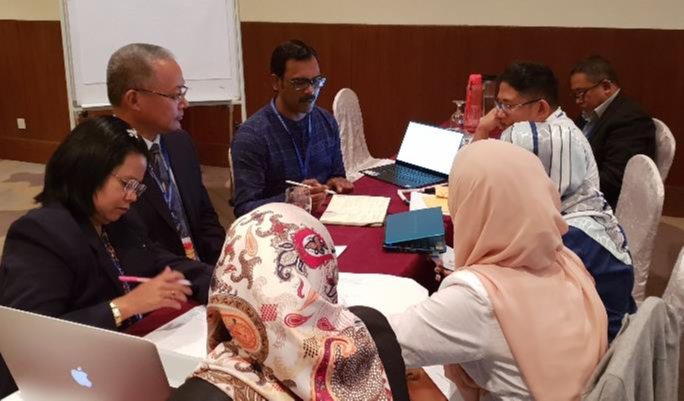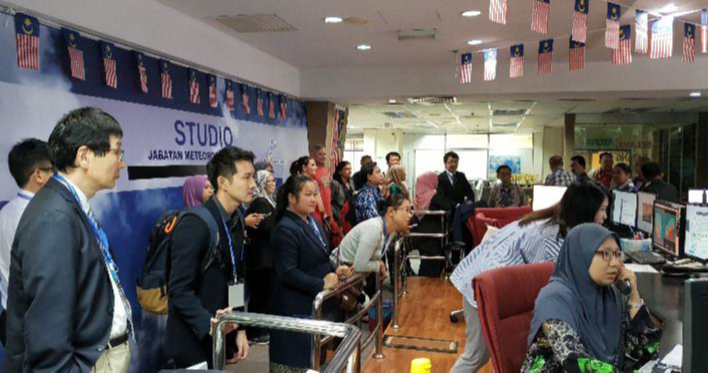28 DEC 2018
ASEANCOF
Summary of the Eleventh Session of the ASEAN Climate Outlook Forum (Kuala Lumpur, Malaysia)

Held in conjunction with the WMO Space-based Weather and Climate Extremes Monitoring Demonstration Project (SEMDP) Workshop
Introduction
The ASEAN Climate Outlook Forum (ASEANCOF) is a biannual meeting held ahead of the boreal summer monsoon (June – August) and winter monsoon (December – February) seasons. The ASEANCOF-11 was held in Kuala Lumpur, Malaysia from 28 October to 2 November 2018. The Malaysian Meteorological Department (MMD) hosted the meeting in collaboration with the ASEAN Specialised Meteorological Centre (ASMC). The event was co-sponsored by the ASEAN Science Technology and Innovation Fund (ASTIF), the Malaysian government, and the World Meteorological Organization (WMO). ASEANCOF-11 was held back-to-back with the WMO Space-based Weather and Climate Extremes Monitoring Demonstration Project (SEMDP) Workshop for East Asia and the Western Pacific.
Climate Outlook Forum Proper
The key objective of ASEANCOF-11 was to issue regional consensus outlooks for temperature and rainfall for the upcoming boreal winter monsoon season (December 2018 – February 2019). To generate this consensus, participants from the ASEAN National Meteorological and Hydrological Services (NMHSs) and representatives from the WMO Global Producing Centres (GPCs) shared their respective outlooks for both temperature and rainfall, as well as the outlook for relevant climate drivers for the region like the El Niño Southern Oscillation, the Indian Ocean Dipole, and large-scale anomalies in monsoon circulation.
SEMDP ProjectCountries’ climate outlook and the consensus shared during ASEANCOF-11 contributed to the planning activities of our stakeholders. Information from satellite providers and RCCs made available through the SEMDP activities will greatly benefit us in helping our end-users monitor extreme weather and climate conditions. – Ms Ng Swee Moi, Brunei Darussalam Meteorological Department.
A two-day workshop for the SEMDP involved relevant WMO Regional Climate Centres (RCCs) and NMHSs in designing space-based rainfall monitoring products provided by the satellite operators. The purpose is to evaluate and recommend the use of the products to monitor persistent heavy rainfall and drought events at the regional and national levels. End-users were also invited to present their requirements for the monitoring and assessment of extreme weather and climate events. The end-users came from the Hydro and Agro Informatics Institute (HAII, Thailand), International Rice Research Institute (IRRI), and Mekong River Commission (MRC). A breakout group discussion was organised involving the NMHSs, satellite providers, GPCs, RCCs, and end-users to ensure the satellite products to be developed under the SEMDP would be relevant to the various sectors in coping with present climate variability and extremes.

During the two-day SEMDP workshop, participants discussed their requirements for monitoring extreme weather and climate events using satellite remote sensing, which will help to supplement ground observation data.
A Visit to the Malaysian Meteorological Department
On the last day, participants toured the MMD forecast office, and it gave them an idea of MMD’s operational needs and its latest tools and modelling capabilities.

Tour of the Malaysian Meteorological Department’s forecast office to learn about its operational needs, latest forecasting tools, and modelling capabilities.
The ASEANCOF Consensus Statement for DJF 2018-2019 can be found here.

Back